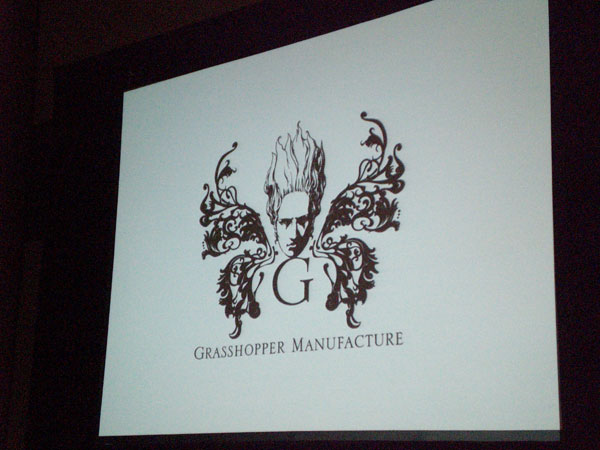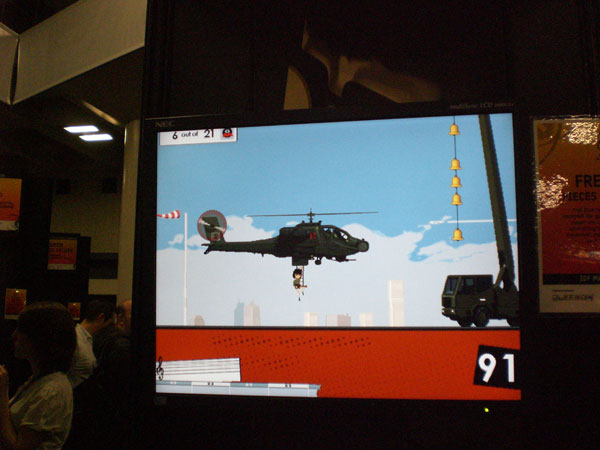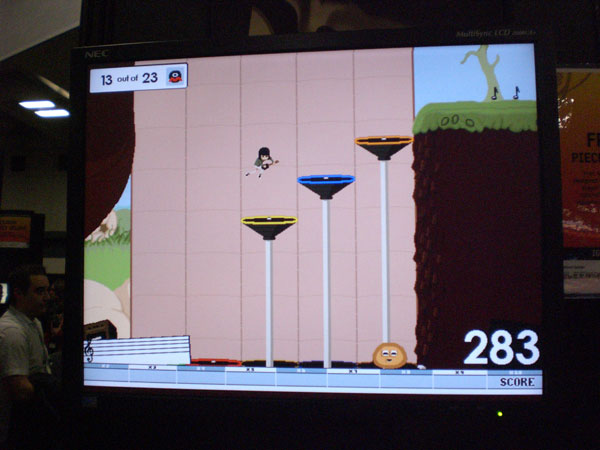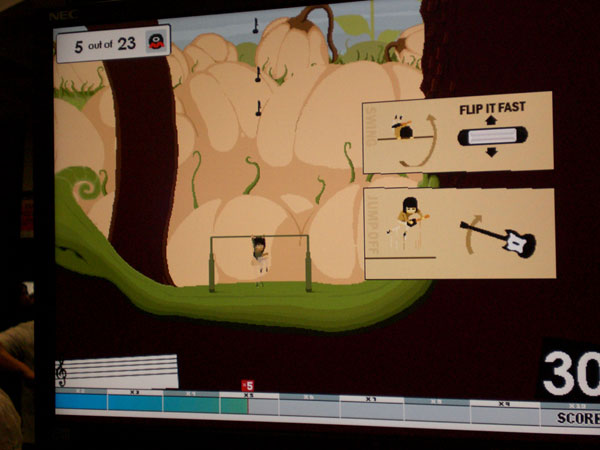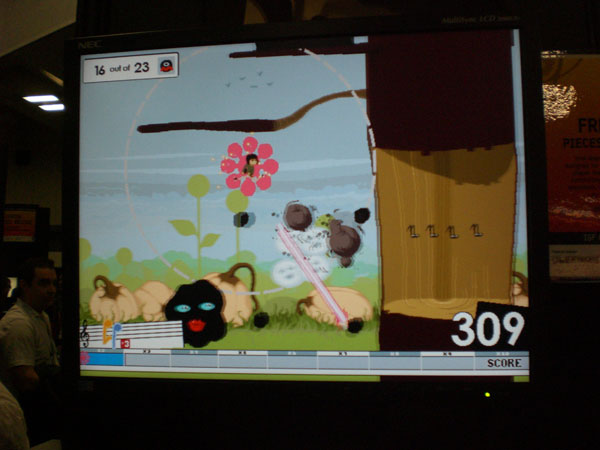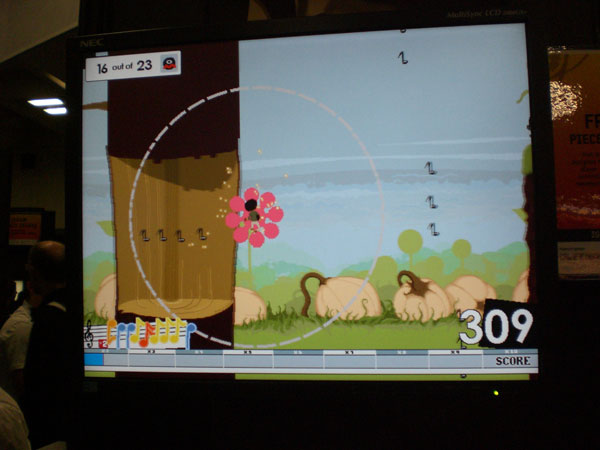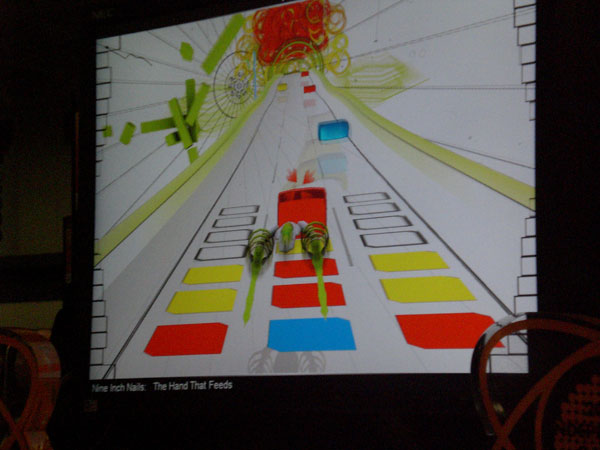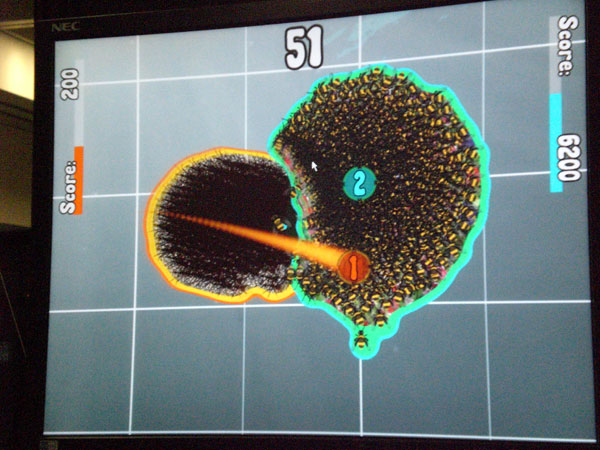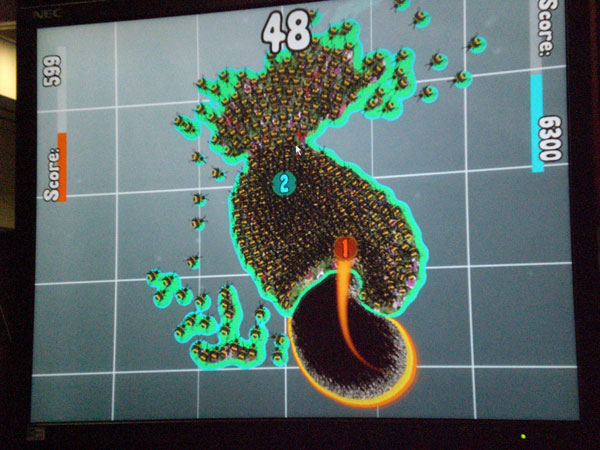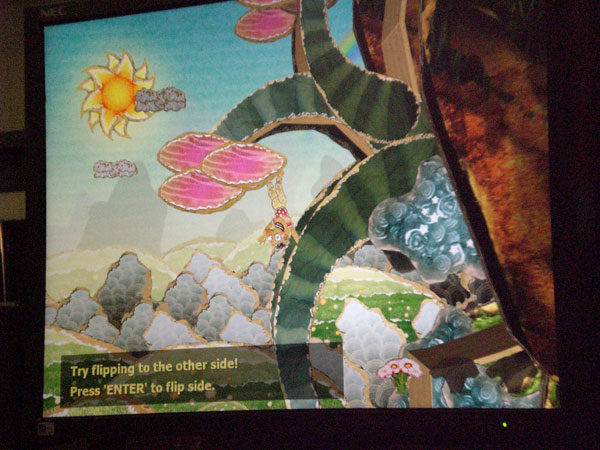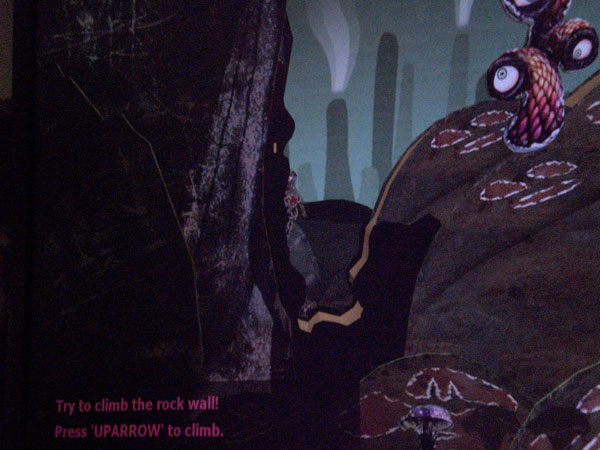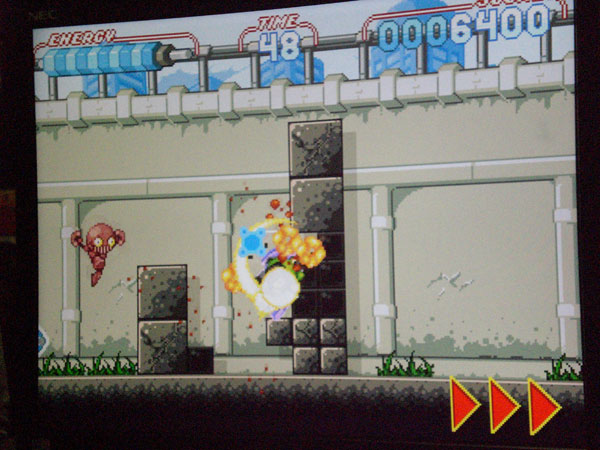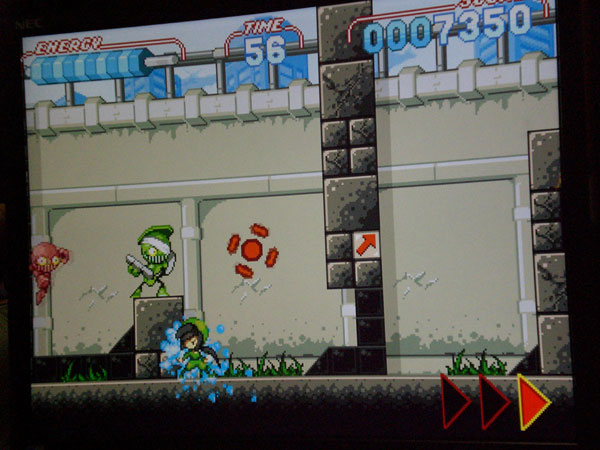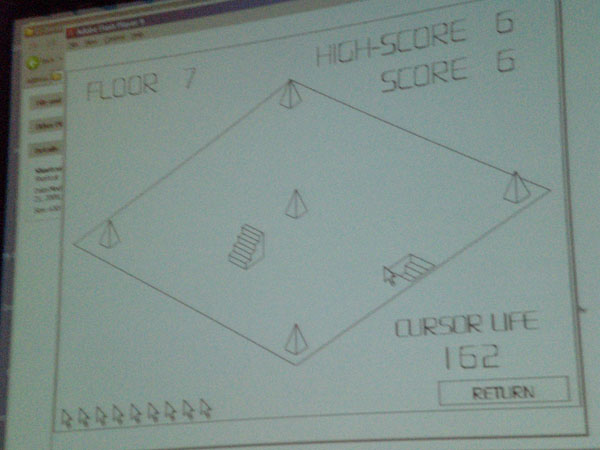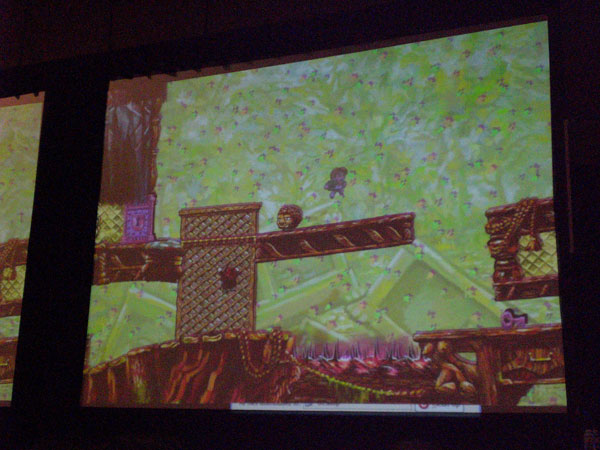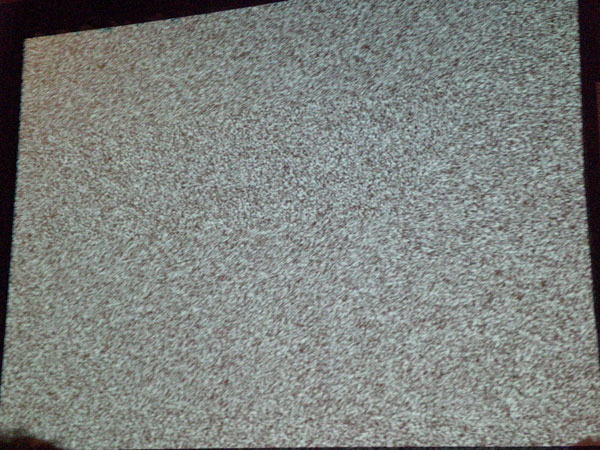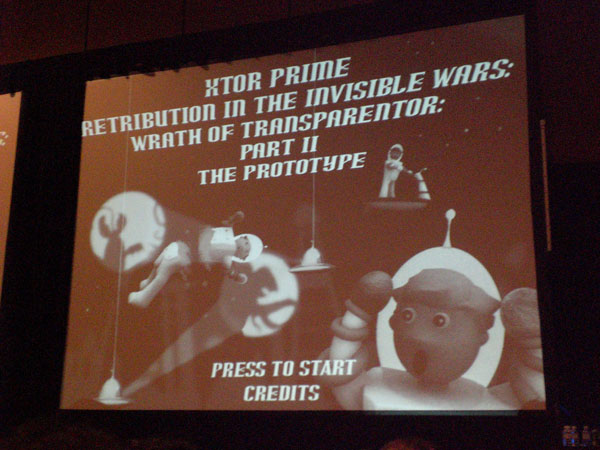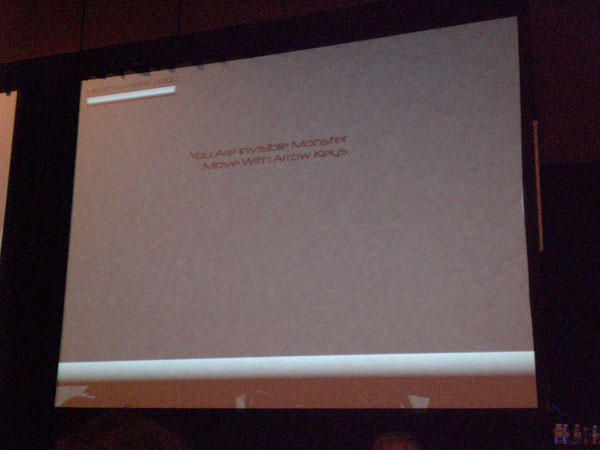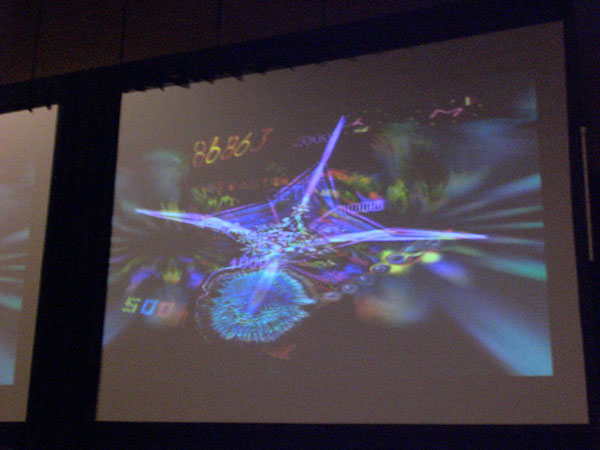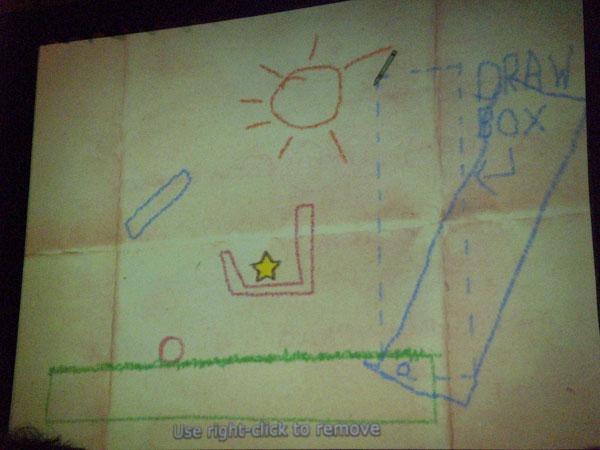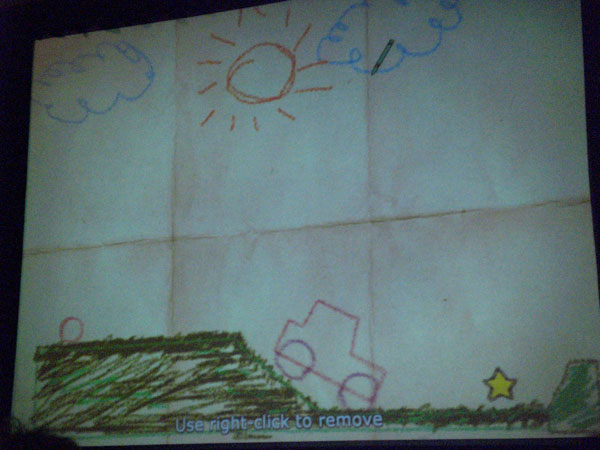GDC Day 4
I got a late start to the morning, due to being up most of the night, thanks to fucking Jollibee.
The first program for me was a presentation from Masafumi Takada. In addition to being the primary composer for all of Grasshopper Manufacture Inc’s games, Takada also serves as their fire prevention supervisor. But anyway, he was there to talk about his line of work, which is basically translating visuals into the language of music, and that not only includes all of Grasshopper’s titles, but for various other clients as well (Takada is actually a full time freelancer, with Grasshopper being his primary client).
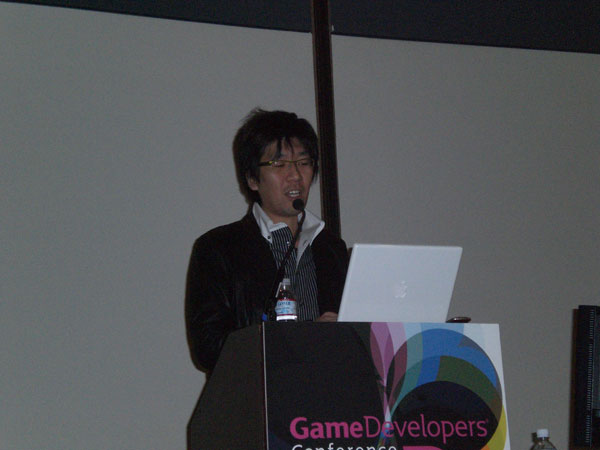
Takada went over various games he’s been involved with, and how he approached the task at hand. Sometimes he’s given instructions, like for Umbrella Chronicles; Capcom wanted to preserve the music of the previous Resident Evil games via simple re-arrangements. But given the completely different tempo of Umbrella Chronicles, which is a fast paced, action packed on-rails shooter, when compared to the rest of the series, which for the most part are slower, more quiet then all of a sudden explosive, the tunes had to be tinkered around a bit. So rhythm instruments were used to maintain the original melody, while liberal use of guitar helped to increase the tempo and help compliment the action.
Meanwhile for God Hand, Takada went for a slightly different approach, while still doing the same job of complimenting what players saw with what they heard; since the game was designed for hardcore players in mind, who are well used to witnessing and being involved in massive amounts of high-intensity action, why not try to balance and chill them out with music meant to relax? Also, after finally seeing what the game is all about, I am going to actually pop in my copy of the game and give it a shot (as silly as it sounds, Select Button’s constant fawning over the game has been the reason why, even though I’ve had a copy since day one, I haven’t bothered).
Takada noted that Shinji Mikami’s stuido is located in Osaka, whereas he’s based in Tokyo, and found working remotely on this particular game lead to him hitting the wall creatively, so he packed his bags to “breath the same air of the developers” which can often be beneficial, plus to try out the awesome food they have there. In the end, he tried imagining what Miakami would be if he was a piece of music, and went from there. Again, fairly standard procedures did the tricks: for one boss battle, a motif was created, something catchy yet nostalgic, and when the same boss shows up later even bigger and batter, so is the music.
Killer 7 was next. Because it was difficult for him to wrap his head around the game itself, it made finding a starting point almost impossible. In such an instance, instinct kicks in, but with that comes a fear of inconsistency. So instead of worrying about keeping the music unified, Takada realized that special attention to sound effects would be key, especially for actions that happened throughout, like enemies getting hit, windows in the menu being accessed, etc. And once again, the gameplay SUCKS, but Christ, the art direction and especially the sound design is still tops.
Takada’s most latest work, as most folks know, is No More Heroes. The first thing he wrote was the music for the trailer, which he literally had one day to do, thought at that same time, he had just come up with a melody while messing around the piano. That tune worked so well that it became the main phrase. Funfact: it was Takada’s idea to use the Wii-mote as a cell phone! Once again, pure genuius. Also, a remix album is on the way, featuring a number of notable names in the game music biz! And his next project? A new Steel Battalion game. I had no idea one was in the works. Plus if you go to his site (which I can’t find btw), you can listen to the ending of Yoshi’s Story, so he did the music for that game too? Man, talk about variety.
On the side, he likes to get together with other game musicians and play in a band, and also organizes something called Hopper, which is a yearly game festival run by Grasshopper.
Afterwards was a brief Q&A session between Takada and Tommy Tallarico, who is the guy who brought Takada in as guest in the first place. Most of the questions dealt entirely with the business end of things, such as how the salary structure is in Japan, though two not so technical bits of insight and info were revealed: apparently “crash and build” is the slogan everyone related to the creative process uses in Japan. Like everyone else, Takada will often create a completely realized piece of music, and if someone says “nay”, it gets thrown onto the scrap heap and he has to start over. Takada noted that he’s depressed that he has created so many interesting pieces, but only for himself, and that as much as he’s like to share them, it’s not possible due to legal reasons. He also admitted to trying to re-use castaway pieces from the past for some new project, and that usually never works. Also, when asked about his tools, Takada confessed that he was a Mac guy all the way, and in fact, considers himself a Mac evangelist.
Next were questions from the audience; I asked him how he got involved in composing game music, and the answer was simple: he was studying music in college, and when the time came to graduate and choose a job arrived, realized that video games was a good field to get into. Plus, he had always had a thing for game tunes, ever since the music of Xevious and Mappy “grabbed him.” Some dude asked him if it was true or not that he was doing the soundtrack to Fatal Frame 4, so Takada looked at some woman in the audience and spoke to her in Japanese, who gave crossed her arms, which how they say “no” over there. The final answer was “No comment!”
The real surprise of the hour was when Masahiro Sakurai came up to ask a question…
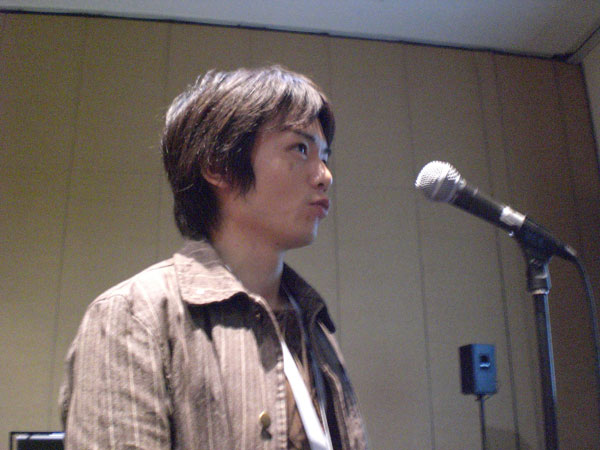
… For those who don’t know, Takada worked on Super Smash Bros Brawl, and Sakurai noted how amazed he was that Takada knew so many different styles. The best part of all this is, because the session was bi-lingual, all us English-speakers had to wear these headphones (there was a woman in the back translating everyone on the spot), so when a question was asked, there was a pause for the translator to explain it in Japanese, and then another delay as we got the answer in Japanese. Well because Takada and Sakurai were both speaking to each other in Japanese, and quickly back and forth, the poor translator woman had a hard time keeping up, as did the rest of us. But in the end, I believe it was said that game music is a lot like jazz.
After lunch, it was time to swing by the IGF pavilion! One of my faves was easily Fret Nice, a platformer controlled by the Guitar Hero guitar…
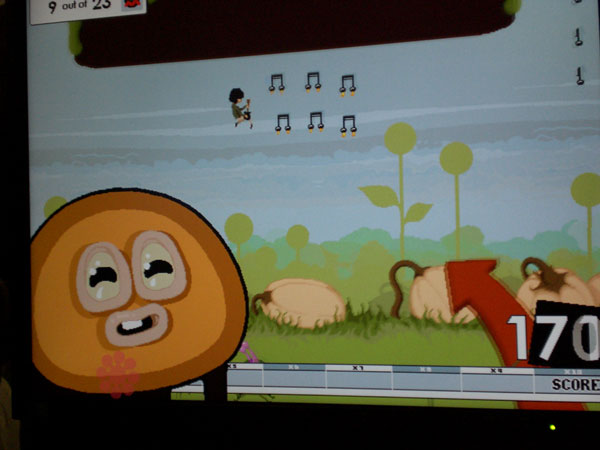
… You walk either right or left with the fret keys, and you the tilt the guitar to perform jumps…
… Like all platformers, there are enemies to dismantle, and you do that by blast tunes (actually, musical notes that you collect as you walk around, which act as ammo) by hitting the strum…
… It took a bit to get used to the controls, but not too long, plus the sights and sounds, as well as the concept was fucking ace. Hopefully it’ll be coming out commercially very soon!
Here’s Audiosurf. It’s music based game, and I know it sorta looks like Frequency or Amplitude, but it’s much deeper than those two titles…
… It’s kinda like Vib Ribbon: you load in an audio file from you computer, the game analyzes it, and then creates a level based upon the it. As you go down the track, there are colored blocks that come towards you (with the color based upon the tones and beats of the song). The object is collect/run into blocks of certain colors and in certain combinations; as you can see, underneath the vehicle is a bunch of slots, where the colored blocks are collected…
… So basically, a combination of racing game, music game, and puzzle game! And it all works together superbly.
Here’s Goo, a action/strategy game that is more or less the game Go. But with slime. It was VERY pretty…
… I didn’t spend too much time on the game, so I never really got a good feel for the game, but it sure was pretty.
And here’s Flipside, a platformer that has you playing as one character but with two distinct, polar opposite personalities, so you’re really controlling two characters at once. And as one might expect, you have to constantly switch between the two to figure out puzzles and the stuff…
… Though the wackiest part of the game is how it runs on the Half Life 2 engine!
And here’s Noitu Love 2: Devolution, a good old-fashioned hyper action-platformer, in the vein of Gunstar Heroes…
Other neat games that I unfortunately did not get pictures of were The Path, a wonderfully atmospheric video game take on Little Red Riding Hood, Triachnid, which is almost like a combination of Shadow of the Colossus and Sodaplay in my mind, Gesundheit, which some might recall me talking about years ago, and Poesysteme, an arty-farty poetry game from France. Oh, and Clean Asia was present as well; which I tried playing, but totally sucked at. And of course, the guy after me totally blew the game away. That being the creator. Still, what a show off.
Anyway, the highlight of Thursday’s programming, and of the entire conference for most people, was the two hour experimental gameplay showcase, as orchestrated by Jonathan Blow. The program was separated into several sections, with games illustrating a certain approach or hook.
I found the first section, covering games that toyed around with the concept of time and multiple play-throughs, to be the most interesting, primarily Cursor*Ten…
… Here’s how it works: you move the cursor around a room, clicking on stuff to get points, but mostly to trigger whatever mechanism to open a path to the next room, whether it be hitting a switch once, multiple times, or holding it down. There’s a time limit, and you WILL run out of time during the first play through. So immediately the game starts over… but every action from before is repeated. So in a sense, you will be playing alongside yourself. Which is super important when it comes to places where you have to hold down a switch to activate an opening… which you yourself cannot utilize, but your future self can. Some triggers require hundreds of clicks to activate, which is too much for one cursor to handle, but if others from other timelines are there to help.. The game is simply BRILLIANT. It, alongside The Night Journey, simply blew me away. Best part is, everyone can give it a shot right here.
EDIT: Oh, and like a total idiot, I completely didn’t notice how it was already passed along on my very forum over a month ago!
Next was Time Bot, which was the same basic idea: you perform an action to set something up so you can go further the next “time” you play. In this instance, actions are contained in loops, and the puzzles are a lot more slower paced and cerebral. It was explained that one of the later puzzles is so difficult that it took about an hours worth of tries to get the timing right in order to set up the proper path, which involved hitting switches to create blocks that in turn form a path. Just check YouTube to see what I mean.
Then you had Blow’s very own Braid. It was introduced for “the ten of you in the audience that have yet to see it.” Which, naturally, included me! And for those who still don’t know what it is, Braid is an action-platformer that constantly “remembers” what you are doing (again, its a 360 game, so the hard drive obviously is in use here), and at any point can you create loops of whatever action took place, then break away to do something else to compliment it…
… One example had Blow trying to open a locked door, with the key across a spiked pit. Both the door and key (which btw are the only objects that are “independent” of the constant time fluctuating) are accessible via ladder, but if you’re character has the key, he can’t climb them, meaning a jump across the pit. But when Blow gave that a shot, he came just a hair too short and landed on the spikes to die, with the key falling below and reappearing at its original spot. So the action was rewound then replayed, and just as he was again landing on the spikes and dying, Blow had position another guy, this time standing on the other side, right on the edge. Who was able to catch the key just as the first one lost possession of it. The entire set-piece was really something amazing, getting nice “oohs” and “aahs” from the packed audience. There are apparently a lot of puzzles in which you have to off your parallel self to advance.
The Misadventures of P.B. Winterbottom takes that formula even further; again, you advance by taking advantage of actions and creating loops of them to be utilized by a later self. Like standing somewhere to allow yourself to be a platform for a later version to stand on… who can then form another step for yet a third version of yourself. But what if the third guy knocks out the first guy, which would cause the second guy to be unable to set up the third guy… the game allows and to a certain degree encourages the creation of these time paradoxes. The games uses a lot of Rube Goldberg-type set pieces, plus has awesome art direction (its supposed to feel like a silent film, so when you rewind and replay, there’s plenty of film tricks). Again, superb.
The next series of games dealt with that tries to be confuse, yet also be transparent. Such as Lost in the Static. It’s your average platformer, but absolutely everything is static. One can tell what something is, or what’s going on due to the type of static the object has (there are 17 different kinds in all). It’s nothing brilliant, just a cute idea. One that is TOTALLY not marketable, since screenshots are impossible to produce. Yet, I still tried taking a picture…
Then you had this…
… Which was conceived as part of a contest to create the worst game possible. So the creators came up with an idea of a game in which you control a huge monster. An invisible monster, even to the player. Occasionally environmental elements will help to show where you are, but for the most part, you are completely blind…
… To enhance the effect, the whole thing is set up like a movie once again, but a D grade, Ed Wood flick. Like how the UFOs you fight are on strings. There are also boss fights, with other monsters, and they too are also invisible! Another primary goal was to create a game in which people would play with absolute intensity, but anyone watching would be completely confused because nothing is going on.
Here we have Space Giraffe, by Jeff Minter. Some might recall me being super psyched for it during development, as were many other folks. After-all, his re-envisioning of Tempest was beloved by all. But when his latest game finally came out, it received a pretty cold reception; most were confused by the new game, to the point of anger and disgust. People hated it, and told anyone who would listen to avoid it like the plague. Which was advice I heeded since some of the folks echoing such a sentiment were those whose often knew what they were talking about. But after seeing it in motion, I want to play now more than ever…
… The graphics for each passing level become brighter, more colorful, flashier, louder, more abstract. Which makes knowing what the hell is going on pretty damn difficult. Then again, according to Blow, it’s meant to be confusing, but the true source of confusion lies with how its played; this is not your dad’s Tempest, and the rules of old absolutely do not apply. Just leaving your finger on the shot button is actually the last thing you want to do in some instances.
But if there’s one person who has certainly figured out the game, it’s Blow, cuz he was whipping through level after level with absolute ease, and we’re talking about level 64 and above, the really hard (i.e “good”) shit. Also, sorry Rez, but there’s a new druggies? game of choice in town. Blow actually blames Minter, for not properly explaining the game to the rest of the world. He’s all up for doing whatever the hell he wants, conventions be damned. But Minter also needs to see where the player is coming from and give them at least a shot.
The last game in the “obfuscation” series was Stars Over Half Moon Bay, by Rod Humble, creator of the much talked about game from last year’s GDC, The Marriage. Like the Marriage, there are no real instructions, and believe it or not, this latest one is even more esoteric (though Humble did offer an explanation, which was mostly a reaction to his frustration to not being able to come up to a “worthy” follow-up of The Marriage).
There are no pictures because, well, none of them came out, and they’d make zero sense anyway (even more so than Lost In The Static), plus it might be best to not saying anything and just let the game be played. Though I will say that, I don’t think its anything profound, like The Marriage, but then again, I don’t think its trying to be either. I am curious though to see how people will react to it… primarily from those that both loved The Marriage and hated it.
One game that fell under the category of “two spaces” was simply titled Shadow. Again, sorry for the lack of visuals, but they too would have made very little sense, as well as make the game look extremely boring. After all, you’re just trying to move a very plain looking ball from one plain looking platform to another (the lack of detail is in part due to the fact that it’s just a prototype for the moment). The thing is, the distance between platforms are often too wide for the ball to get to via jumping, and that’s where the title comes into play; you have two viewpoints, looking at the object and looking at the shadows they cast. In somewhat the same vein of Echochrome, perspective is everything, and if the shadows of two objects look close together, despite their actual distance, then that’s all you need to get the ball, or at least it’s shadow, along the way. Yet another game that really impressed the crowd, and one to look for.
Another two spaces title was Shift, an action platformer that also deals with shadows, but in an entirely different manner. There’s not much to say here other than it?s a game that plays around with perception, and well worth checking out!
And finally, for the “user generated” category was Crayon Physics Deluxe, which could be considered the game of the show, simply because it did manage to nab the top honors the previous night at the IGF awards, the $20,000 Seumas McNally Grand Prize. Basically, the entire world as one can see, is in crayon. And to make things happen, you use… a crayon! The object of the game is to get the red ball to touch the yellow star. And to do that, you create shapes, even simply machinery, all via crayon, which are governed by the law of physics. It?s so amazing, that one absolutely has to check it out…
… Most puzzles involved creating a shape that moves, to propel the red ball, or to push it along. And to make the boxes move, pulleys and hinges are created. Again, everything behaves precisely how they would work in real life…
… It was a fine example of a game being made with one specific solution to a problem in mind, and others going completely wild with their totally crazy, yet totally working, concepts. All of which illustrates how fantastic and robust the concept and execution is. The only limit to the game, and I hate to sound so cheesy, but it’s so true in this case, is one’s imagination. And you know a game has totally hits its mark when everyone looks on eagerly as a person is laying everything out, nice and slow and deliberate, and when the moment of truth happens, and it all works out, you get thunderous applause.
And that was it for day four! Yet plenty more was in store that evening, quite a bit more actually, but perhaps it?s best to wait for that next time…
